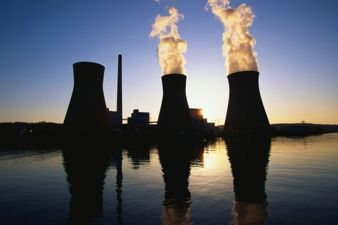“Artisanal and small-scale gold mining is recognized as a major challenge in efforts to reduce emissions from mercury,” said Fernando Lugris (Uruguay), Chair of the Intergovernmental Negotiating Committee.
“While taking into account the impacts on national development, we must move to set national goals and reduction targets. Other efforts should work towards the formalization of the sector, which is largely unregulated. As well as reducing health risks from mercury, this could give workers greater rights under labour laws,” added Mr. Lugris.
Coal burning is responsible for some 475 tonnes of mercury emissions annually, or around 24 per cent of the global total.
Despite increased coal combustion in certain regions, more stringent regulations on pollution in several countries have contributed to reducing overall mercury emissions from coal burning and off-setting part of the emissions arising from increased industrial activity.
Other sources of mercury highlighted in the UNEP publications include:
- Metal and cement production, through fuel extraction and combustion of fossil fuels
- Consumer products such as electronic devices, switches, batteries, energy-efficient light bulbs and cosmetics such as skin-lightening creams and mascara. Mercury contained in such goods can also enter the waste stream.
- Dentistry: Around 340 tonnes of mercury are used annually to make fillings and other dental products, of which up to 100 tonnes are likely to enter the waste stream
- Plastic production, particularly the manufacture of poly vinyl chloride (PVC). PVC is in high demand in many countries where there are extensive building projects
- Chlor-alkali industry (production of chlorine and caustic soda from salt)
- Primary mining, although the practice is now limited to a handful of countries with only one (Kyrgyzstan) still exporting
Action on Mercury
Efforts to tackle the environmental and health threat posed by mercury have grown over recent decades, according to the reports.
Notable actions include:
- The UNEP Mercury Products Partnership has set the goal of reducing demand for mercury-containing thermometers and blood pressure devices by 70 per cent by 2017
- USA has finalized the Mercury and Air Toxics Standard which predicts to reduce mercury emissions by 20 tonnes by 2016
- European Union banned mercury exports in 2011 and the USA has just started an export ban from 1 January 2013
- UNEP has supported National Action Plans by Argentina, Uruguay and other countries to find environmentally-sound solutions for the storage and disposal of excess mercury and waste products
Yet despite such steps, coordinated action on a global level to reduce environmental and health risks posed by exposure to mercury has been comparatively slow.
The UNEP studies state that accelerated action, such as finalizing a global, legally binding treaty, promoting the availability of low-mercury technologies, and other measures, can support a sharp decline in demand for mercury.
To achieve this, primary mining of mercury should be ceased as soon as possible, and demand met by investing in improved recycling measures.
Governments should ensure regulatory frameworks and incentives to promote the transition to viable, safe and commercial alternatives, resulting in reduced releases of mercury and other pollutants.
UNEP produced its first Global Mercury Assessment in 2002 and a subsequent study in 2007. The 2013 assessment is the most comprehensive to date, and includes information on the release and impacts of mercury in aquatic environments for the first time.
Source: UNEP.















